Dave Tacon explores the world of Atelier Deshaus with a visit to their studio and to their latest Long Museum project in Shanghai.

October 14th, 2015
Top image: Long Museum
“We hope that all our projects will be viewed as works of art, whatever the purpose,” says architect Liu Yichun, as he strolls through the imposing and monumental cast concrete curves of Shanghai’s Long Museum in the city’s West Bund precinct by the Huangpu River. The commission to design China’s biggest private art museum for China’s best known art collectors, billionaire couple Wang Wei and her husband Liu Yichian, is the most prestigious project to date for Liu and his architectural partner Chen Yifeng who founded their firm Atelier Deshaus in 2001.
At 45, with a salt and pepper mop of hair, Liu is slighter in stature than broad shouldered Chen, 42, but both are dressed in the uniform of architects worldwide: head to toe black (black shirt, black t-shirt, black jeans, black shoes) and steel-rimmed glasses. The two architects have an easy-going friendship and are both graduates of Shanghai’s Tongji University’s Department of Architecture.
One of many things the pair agree on (as well as choice of wardrobe) is the importance for architects to appreciate and include the historic relevance of sites within cities when designing a project. In the case of the West Bund, it was once an industrial area, a previously hidden corner of Shanghai, surprisingly close to the city’s historic waterfront.
“This structure was a coal hopper from when this area was a port facility,” says Chen gesturing to the giant jetty-like platform of weathered and rust-stained concrete. This industrial remnant divides the two main wings of the Long Museum and looms like an art work in its own right.
Yichun chimes in: “Firstly, we must acknowledge that a city should be a residence of memory. It was actually the government’s idea for this coal hopper to remain. The Shanghai government realises the value of industrial heritage. The question was: “How do we build a harmonic relationship between the industrial heritage and new buildings?””
Inside the cavernous interior of the museum, Liu leads us to his own favourite artwork, an oil painting by He Douling, a master of Chinese contemporary art. The work from 1988, in Douling’s signature muted tones, portrays a beautiful, but stern-faced woman with a black crow that has seemingly just taken flight from her shoulder. “I love the feeling it expresses. The relationship between the character and the crow delivers a surreal feeling,” Liu explains as we contemplate the painting.
Chen is not as forthcoming with his own favourite work. “I haven’t really had a chance to look at all the artwork,” he explains. “Chen’s favourite work would have to be in the ancient pavilion,” Liu suggests knowingly.
Liu and Chen agree that the Bauhaus system of design, a modernist approach to architecture founded at the German Staatliches Bauhaus art school in 1919 was a major influence throughout their education at Tongji University. Yet the impact of German design does not end there, especially for Liu who grew up in Qingdao, where German occupation from 1898 to 1914 left a legacy of Germany style buildings. “It was those beautiful German buildings that made me decide to study architecture,” says Liu.
The architects chose the name Atelier Deshaus as a nod to these Germanic influences. As Chen explains: “Our firm was originally named ‘大舍’ (Pinyin: Da She) in Chinese, which has many meanings. It can be understood as ‘big house’, as well as ‘before harvest one has to let go of a lot’, from a Buddhist angle. The western language name ‘Deshaus’ was created by combining the Chinese pronunciation of 大舍 with German ‘Des Haus’, which means ‘of the house’.”
Atelier Deshaus’s studio is on the second floor of a converted red brick factory office block in Red Town, a gentrified industrial precinct in Shanghai’s inner west. The architects installed their own rusty industrial staircase on the building’s exterior and added a patch of their own signature corrugated steel cladding to the wall by the office entrance.
Inside, about a dozen young staff work silently and intently. Almost all table space aside from workstations is covered with architectural models of wood, cardboard and Styrofoam. Another steel staircase leads to a long, low storage space that looks like it might house a conveyer belt, but it too is crammed with architectural models, which have been exhibited throughout Asia and Europe.
Among Atelier Deshaus’s current projects is a community centre in Xuhui in crowded downtown Shanghai. “The size is very small, but the site will have so many functions. There will be a lot of problems, so it’s a typical Shanghai project,” Chen says with a wry smile. Along with a second community centre in Shanghai, Atelier Deshaus is designing an eco-city showroom in Shaoxing, in Zheijiang Province. “And these models over here are for two teahouses on the Huangpu waterfront,” he says gesturing towards a table covered with translucent Styrofoam sheeting. With so much new architecture to create, there is little opportunity to look back, Chen admits. “As an architect, I am always thinking about the next project.”
Atelier Deshaus
deshaus.com/en/home.html
INDESIGN is on instagram
Follow @indesignlive
A searchable and comprehensive guide for specifying leading products and their suppliers
Keep up to date with the latest and greatest from our industry BFF's!
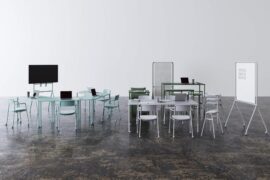
Welcomed to the Australian design scene in 2024, Kokuyo is set to redefine collaboration, bringing its unique blend of colour and function to individuals and corporations, designed to be used Any Way!
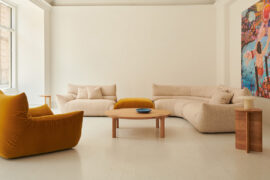
A curated exhibition in Frederiksstaden captures the spirit of Australian design

For Aidan Mawhinney, the secret ingredient to Living Edge’s success “comes down to people, product and place.” As the brand celebrates a significant 25-year milestone, it’s that commitment to authentic, sustainable design – and the people behind it all – that continues to anchor its legacy.
The internet never sleeps! Here's the stuff you might have missed
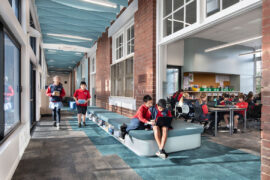
At Moonee Ponds Primary School, Clarke Hopkins Clarke’s transformative design uses Autex acoustic solutions to shape a calm and creatively charged learning environment.
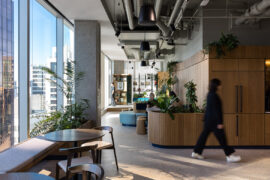
In Auckland, Wingates designs a new headquarters for a specialist investment firm focused on future growth, biophilia and collaborative work.
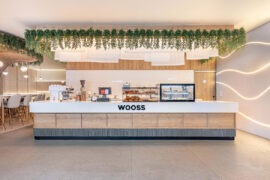
Serving up the perfect dessert is about more than what’s in the crockery, it is also about cultivating an ambient, immersive setting that enhances the treats.
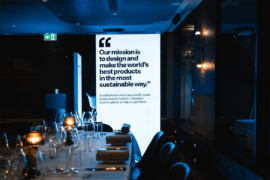
MillerKnoll reimagines the convention of dinner table interactions by plating up a future-forward menu of sustainable design conversation starters as part of the inspiring “Conversations for a Better World” event series.